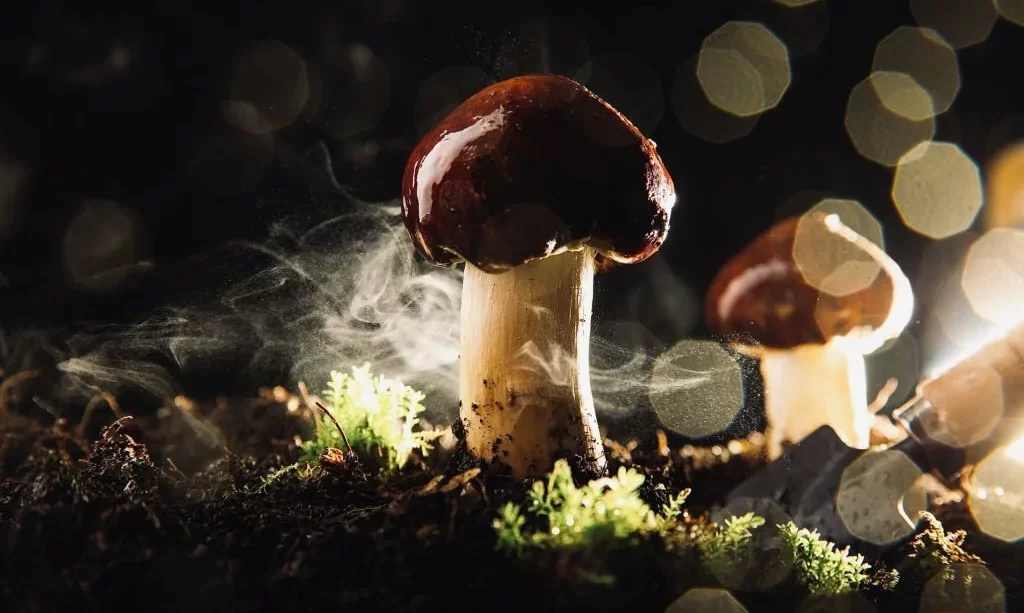Mushroom spores are not just a fundamental aspect of fungal reproduction; they are also essential for those who wish to grow their own mushrooms or study the incredible world of mycology. Properly storing these tiny marvels is key to maintaining their viability over time. In this guide, we will take you through the step-by-step process of storing mushroom spores effectively. Our journey begins with the crucial task of gathering and preparing mushroom spores, a task that requires precision and care. After that, we’ll delve into selecting the right storage containers, ensuring your spores remain in excellent condition for future use.
Gathering and Preparing Mushroom Spores
The journey to storing mushroom spores starts with the careful collection of these microscopic seeds of life. Spores are typically found in mature mushrooms, making it essential to select fungi at the right stage of development. To harvest spores, place a mature mushroom cap on a piece of white paper or glass to observe the spore release. This process may take a few hours, and you’ll notice the formation of a spore print on the surface beneath the cap. To ensure sterility, use a sterilized instrument like a scalpel or needle to gently scrape the spores from the print. Proper sterile technique is paramount at this stage to prevent contamination. Once gathered, the spores need to be processed and cleaned to remove any impurities. This process is critical to ensuring the spores’ long-term viability and health. With properly collected and prepared spores in hand, you’re ready to move on to the next step: selecting the right storage containers.
Choosing the Right Storage Containers
Selecting suitable storage containers for your mushroom spores is a vital part of the preservation process. Glass vials and sterile syringes are often preferred choices due to their airtight and moisture-resistant properties. These containers help protect spores from environmental factors that can negatively impact their longevity. When selecting your containers, ensure they are clean and sterile as well. The aim is to create a microenvironment that keeps the spores in a state of dormancy, preventing germination and loss of viability. As we progress, we will explore the steps to prepare spores for storage and the optimal conditions for long-term preservation.
Preparing the Spores for Storage
Once you have gathered and collected mushroom spores, the next crucial step is preparing them for storage. Begin by ensuring that the spores are free from any contaminants or debris. This can be achieved by gently filtering or sieving the spores through a fine mesh to remove any impurities. Once cleaned, it’s essential to desiccate the spores, removing any moisture that could lead to germination and a loss of viability. Silica gel packets or desiccants are useful for this purpose. Place the spores in a container with a desiccant but ensure there’s no direct contact. Seal the container and allow the desiccant to absorb any remaining moisture. Spores need to be thoroughly dry before moving on to the storage phase. Properly processed and dried spores are now ready for long-term preservation.
Storing Mushroom Spores at Optimal Conditions
Storing mushroom spores in optimal conditions is the key to maintaining their viability over time. The storage environment should be cool, dark, and dry to prevent premature germination. Ideal temperature ranges vary by species but often fall between 35°F to 45°F (2°C to 7°C). It’s imperative to store spores away from direct sunlight or any source of heat, as warmth and light can trigger germination. Moisture is another significant enemy, so ensure the storage area is dry, and the storage containers are airtight to prevent humidity infiltration. These conditions create an environment where the spores remain dormant and viable for an extended period.
Monitoring and Maintaining Spore Viability
Maintaining the viability of stored mushroom spores is an ongoing process. Regularly inspect the storage containers to ensure they remain airtight and free from moisture. Check for any signs of contamination, such as mold growth or unusual discoloration. It’s advisable to periodically refresh your stored spores by transferring a portion to a new container with fresh desiccant. This process helps ensure the desiccant’s effectiveness and keeps your spores in optimal condition. As a mycologist or cultivator, monitoring the health of your spore collection is essential for the success of future projects and experiments. By following these careful steps, you can store mushroom spores effectively and enjoy their vitality for years to come.
The Significance of Proper Labeling
Properly storing mushroom spores involves not just the physical aspects of containment but also the essential task of labeling. Labeling your spore containers is of utmost importance to maintain organization and prevent any mix-ups. Clearly mark each container with crucial information such as the mushroom species, date of collection, and any specific characteristics or notes about the spores. The goal is to ensure that you can easily identify and access the spores you need in the future. Detailed labeling helps you keep track of the diverse mushroom species you may be working with, saving you time and effort. It’s a small but significant step in the process of preserving mushroom spores effectively.
Safety Considerations
While storing mushroom spores is a fascinating endeavor, it’s essential to prioritize safety throughout the entire process. When collecting spores, use sterile tools and follow sterile techniques to prevent contamination. Wear protective gear such as gloves and a mask to safeguard against inhaling spores or other potential allergens. When handling desiccants, take precautions to avoid inhaling or ingesting these chemicals. Proper handwashing and hygiene are essential to prevent contamination and the spread of potential fungal infections. Lastly, always label your containers correctly to avoid any mix-ups that could lead to unintended consequences. By following safety protocols and maintaining a clean and organized workspace, you can ensure both your safety and the integrity of your spore collection.
Conclusion
Storing mushroom spores is a meticulous yet rewarding practice for mycologists, cultivators, and those curious about the world of fungi. The steps involved in gathering, processing, and preserving spores require attention to detail and a commitment to maintaining optimal conditions. Proper labeling and safety considerations are the backbone of a successful spore storage process, ensuring that your valuable spore collection remains accessible and uncontaminated. By adhering to these guidelines, you’ll be well-equipped to embark on exciting mushroom cultivation projects, research endeavors, or simply preserve these biological wonders for future exploration. In doing so, you contribute to the preservation of fungal diversity and knowledge for generations to come.



